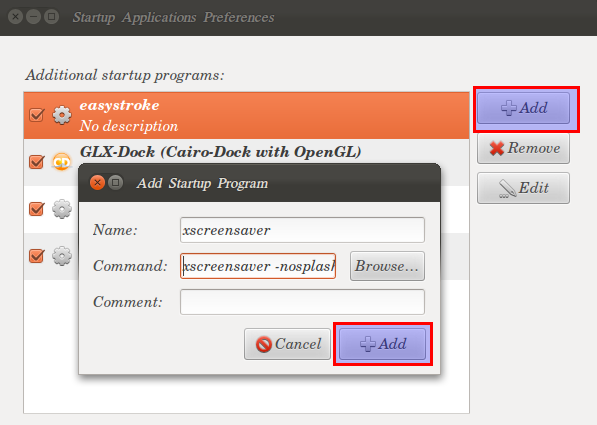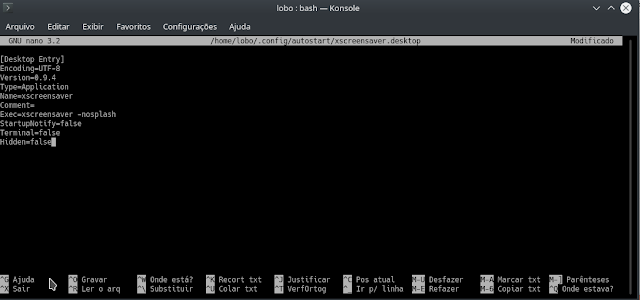
Unfortunately, the Lock Screen option in Unity’s system menu doesn’t work with XScreenSaver. Use the keyboard shortcut whenever you want to lock your system. If you use the default combination, you’ll be prompted to reassign it away from the default gnome-screensaver shortcut. Specify the following command for your custom shortcut:Ĭlick the word “disabled” after creating your custom shortcut and key in your desired keyboard shortcut when the words “new accelerator” appear – Ctrl+Alt+L is the default shortcut that locks your computer. To lock your screen with XScreenSaver, you can create a custom keyboard shortcut that calls XScreenSaver instead.įirst, open the Keyboard utility from the Dash.Ĭlick the Shortcuts tab, select the Custom shortcuts section, and click the + button. Unity calls gnome-screensaver when you click the Lock Screen option in the system menu or use the Ctrl+Alt+L keyboard shortcut. The name and comment here can be anything you like. Get started by launching the Startup Applications utility from the Dash.Īdd a startup program with the following command. If it doesn’t start, it can’t notice your system is idle and launch screensavers. To actually use the screensavers, you’ll want XScreenSaver to start in the background each time you log in. XScreenSaver doesn’t embrace gnome-screensaver’s minimalism - many XScreenSaver screensavers offer a large amount of options you can tweak by clicking the Settings button. You can specify the screensavers it chooses from or enable “Only One Screensaver” mode to always use your favorite screensaver. The Screensaver utility will prompt you to stop the gnome-screensaver process and launch the xscreensaver background process when you start it.īy default, XScreenSaver will choose a random screensaver each time it starts.

Launch the Screensaver utility and use it to configure XScreenSaver and select your screensaver settings.
Xscreensaver nosplash install#
Sudo apt-get install xscreensaver xscreensaver-data-extra xscreensaver-gl-extraĪfter installation, perform a search in the Dash for Screensaver. Install XScreenSaver and some additional screensaver packages with the following command: Next, run the following command to uninstall gnome-screensaver:

Installing XScreenSaverįirst, fire up a terminal from Ubuntu’s Dash.

The GNOME developers think a black screen that puts your monitor into lower-power mode is optimal. Ubuntu uses gnome-screensaver and inherited the change from upstream GNOME. Screensavers were actually removed back in Ubuntu 11.10. If you’d rather have screensavers, you can swap gnome-screensaver for XScreenSaver. Press CTRL+X to save and exit.Ubuntu 12.04 doesn’t ship with any screen savers, just a black screen that appears when your system is idle. Sudo nano /etc/xdg/lxsession/LXDE-pi/autostartĬomment out the screensaver line, e.g.: -profile -desktop -profile $/.config/lxsession/LXDE-pi/autokey.sh Sudo nano /etc/xdg/lxsession/LXDE/autostart It used to be these but they no longer seem to work with the latest version of raspbian: The above has changed in that really annoying way that happens all to often with Linux versions, but seems to be the current file that needs to be edited.

If the above doesn’t work, then there is not a per user file so edit the global one: sudo nano /etc/xdg/lxsession/LXDE-pi/autostart To disable the screensaver: sudo nano /boot/cmdline.txtĪdd the following line to the file: consoleblank=0 Turning off the screen saver – Raspbian Jesse Edit the autostart fileįor the standard Pi user: sudo nano /home/pi/.config/lxsession/LXDE-pi/autostartįor the root Pi user (if running the GUI with “sudo startx” for instance when running apps that access the IO pins): sudo nano /root/.config/lxsession/LXDE-pi/autostart Turning off the console screen saver – Raspbian BusterĬiew the current setting in seconds: cat /sys/module/kernel/parameters/consoleblank Then in the GUI go to Preferences > Screensaver > Display Modes > Select disable screen saver from the dropdown. An easy way to achieve this is to install xscreensaver then configure it to disable (its also the Raspberry Pi recommended way) sudo apt-get install xscreensaver


 0 kommentar(er)
0 kommentar(er)
